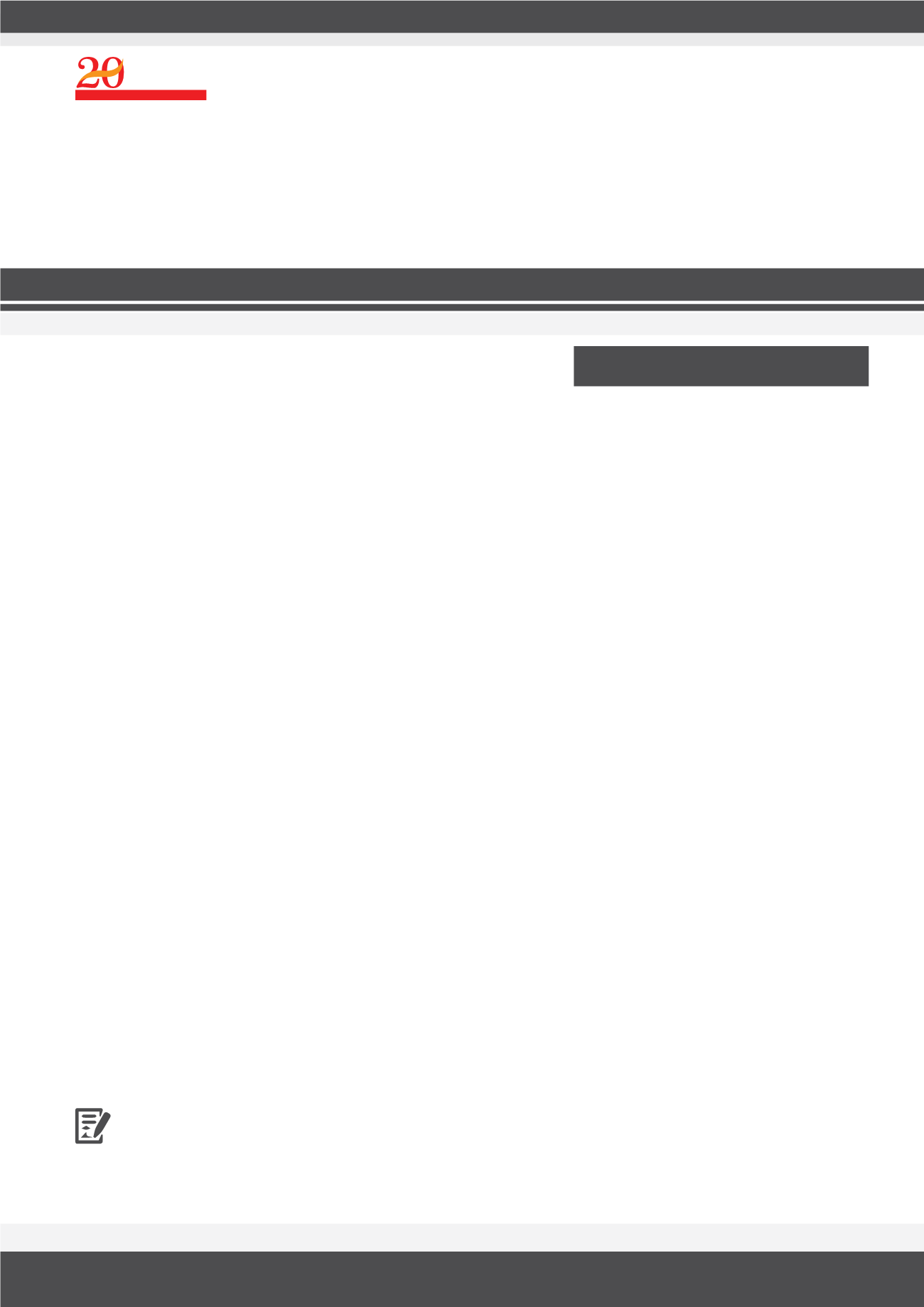

Page 44
Note:
N o v e m b e r 2 6 - 2 7 , 2 0 1 8 | M a d r i d , S p a i n
&
&
BIOTECHNOLOGY
Euro Congress on
GENOMICS AND MOLECULAR BIOLOGY
International Conference on
CANCER SCIENCE AND THERAPY
Global Congress on
Joint Event on
OF EXCELLENCE
IN INTERNATIONAL
MEETINGS
alliedacademies.comYEARS
Euro Biotechnology 2018 & Genomics Congress 2018 & Cancer Congress 2018
Journal of RNA and Genomics
|
ISSN: 2591-7781
|
Volume 14
Masahiro Onuma, J RNA Genomics 2018, Volume 14
ELECTRONIC WATER CAN REDUCE
OXIDATIVE STRESS IN CANCER AND
DIABETES PATIENTS FOR 3 WEEKS
DRINKING
Masahiro Onuma
TrisGuide ltd, Japan
O
xidative stress means a state where there is imbalance between the ox-
idizing action and the reducing action due to reactive oxygen species
(ROS) in a living body, resulting in the oxidizing action becoming dominant.
Oxidative stress arises as the balance between production and removal is
disrupted through excessive production of ROS and impairment of the antiox-
idant system. Oxidative stress has been reported to be involved in the onset
and progress of various diseases. Characteristics of Type- 2 diabetes are in-
sulin secretion failure and insulin resistance, but it seems that oxidative stress
is greatly involved in insulin secretion failure. In the insulin secretion inducing
β cells of islets of Langerhans in the pancreas, the amount of superoxide
dismutase (SOD), which is representative of the ROS elimination system is
small and resistance to oxidative stress is considered to be weak. Regarding
cancer, it is well known that chronic inflammatory conditions increase the risk
of carcinogenesis. Cells such as neutrophils and macrophages are activated
in the inflammation area leading to increase in production of active oxygen
and nitric oxide. These free radicals cause DNA mutation and cell prolifera-
tion thereby promoting cancer development. When chronic inflammation is
present, cancer develops more easily. Electronic water, which was developed
to generate electron in water was consumed for three weeks, after meals,
between meals and before sleeping 6 times a day and according to the test
subjects’ possible time periods. The amount of drinking water was 750-1000
mL and BAP and reactive oxygen metabolites (d-ROMs) checks for all cas-
es were carried out at 4:30 pm. The results of cancer patients and diabetes
patients were seen as attached. As a result, the d-ROMs value in the degree
of oxidative stress has reduced and the BAP value, which is an indicator of
plasma antioxidant capacity has improved significantly.
Recent Publications
1. Masahiro Onuma, Iwao Suzuki and Hiroshi Yamauchi. New develop-
ment of uric acid synthetic inhibitor – Toward a new target for xan-
thine oxidation-reduction enzyme inhibitor allopurinol.
Masahiro Onuma has expertise in oxidative disease
prevention to use non-medical product based on GSK’s
experience of Allopurinol which is the strongest anti-ox-
idant efficacy in this world. He creates new indication of
Allopurinol for stomatitis induced by cancer treatment
which was approved by the Japanese Cancer Treatment
Committee to propose newmechanism of Allopurinol for
anti-oxidant and now there are so many new research
papers of Allopurinol in the world.
onuma@trisguide.comBIOGRAPHY
















